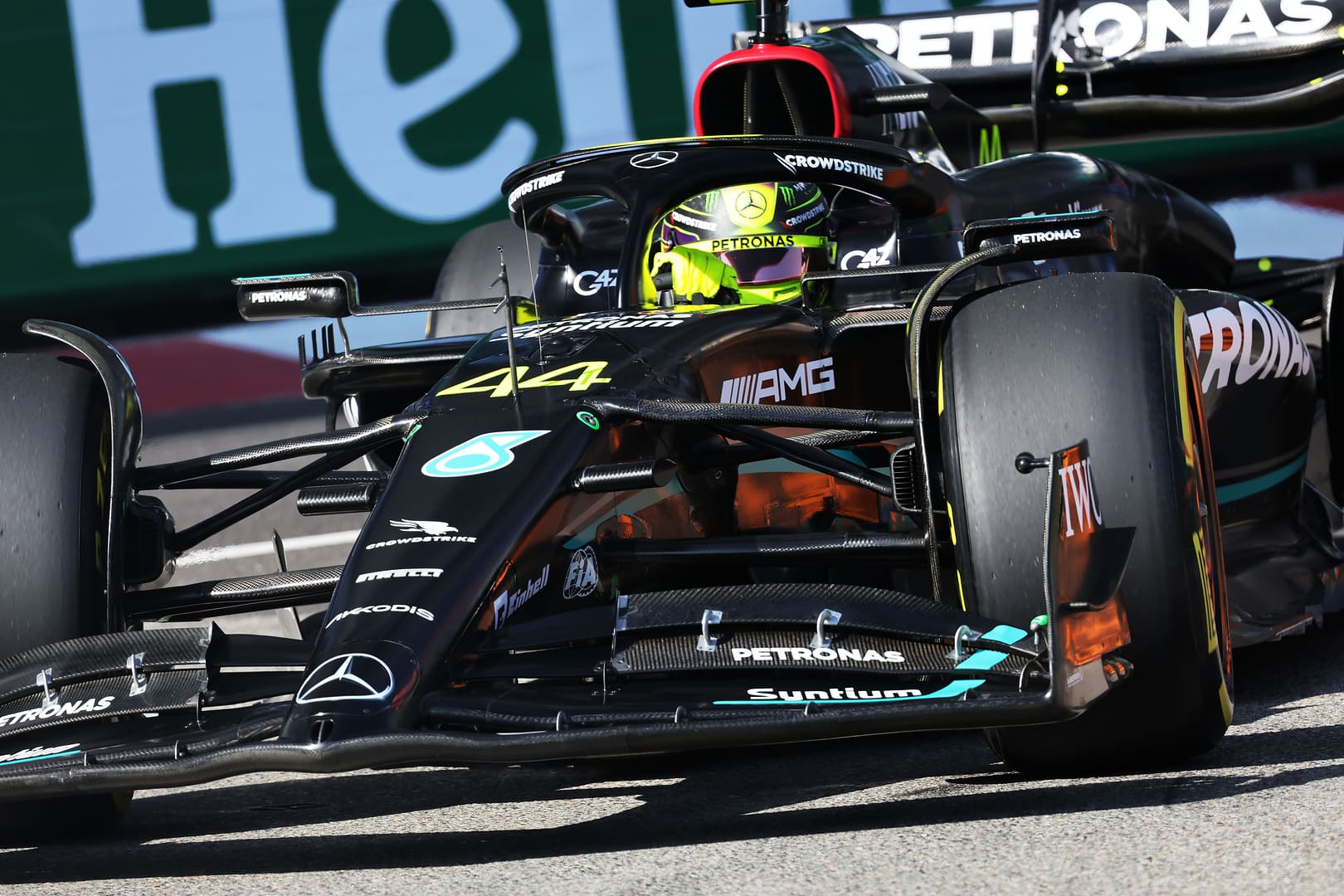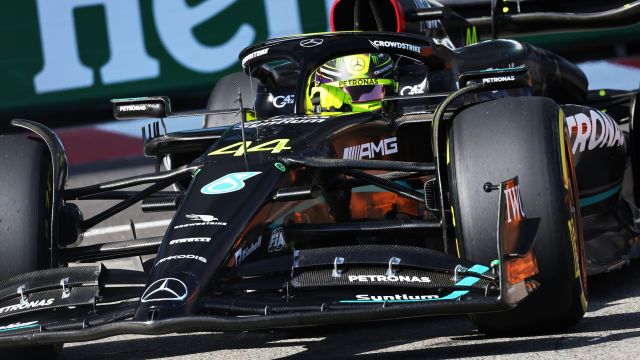What Is Active Suspension?


In the high-speed, technologically advanced world of Formula 1 racing, the term “Active Suspension” has reverberated through the paddocks and across racing circuits for quite some time. This innovative technology, which was once a pivotal part of the F1 machinery, has been the subject of admiration, controversy, and extensive discussions among motorsport enthusiasts and experts alike.
Key Takeaways
- Active Suspension is a type of automotive technology that controls the vertical movement of the wheels relative to the chassis or vehicle body.
- Initially introduced in Formula 1 in the 1980s, it was later banned due to concerns over escalating costs and technological disparities among teams.
- The technology was primarily aimed at maintaining optimal aerodynamic efficiency and tire management during races.
- Despite its ban, the concept of active suspension has been periodically revisited in various discussions related to F1 regulations and technological advancements.
A Dive into Active Suspension
The Genesis of the Technology
The concept of Active Suspension in Formula 1 was first introduced in the 1980s, with teams like Lotus and Williams pioneering its development and application. The primary objective was to control the ride height of the car, ensuring that it remained constant regardless of the external forces acting upon it, such as downforce and mechanical load.
Video Reference: The Incredible F1 Suspension So Good It Was Banned
The Mechanism Behind Active Suspension
Hydraulic Actuators and Control Units
Active suspension systems in F1 utilized hydraulic actuators to control the vertical movement of the wheels, ensuring that the chassis maintained a consistent height above the track surface. These actuators were controlled by sophisticated electronic control units (ECUs) that processed data from various sensors placed around the vehicle.
| Year | Team | Notable Achievements with Active Suspension |
|---|---|---|
| 1987 | Lotus | Introduced active suspension technology in F1 |
| 1992 | Williams | Won both Drivers’ and Constructors’ Championships with active suspension |
| 1993 | Williams | Dominant season with active suspension, winning 10 out of 16 races |
Aerodynamic Stability and Tire Management
The active suspension system was crucial in maintaining aerodynamic stability by keeping the car’s underbody and wings at a consistent height above the track, optimizing downforce and minimizing drag. Additionally, it enhanced tire management by ensuring uniform tire wear and maintaining optimal contact with the track surface.
Article Reference: What Is Formula 1 In Simple Terms?

The Rise and Fall of Active Suspension in F1
Triumphs and Challenges
Active suspension brought about a revolution in the way F1 cars were raced and engineered. The technology provided a significant competitive edge to the teams that mastered it, most notably Williams, which dominated the 1992 and 1993 seasons with their advanced active suspension system.
However, the technology was not without its challenges. The complexity and cost of developing and maintaining active suspension systems were astronomical, leading to disparities among the teams in the paddock.
The Ban and Its Implications
In 1993, active suspension was banned from Formula 1 as part of a series of regulation changes aimed at curbing escalating costs and leveling the playing field among teams. The ban led to a shift in focus towards passive suspension systems and brought about a new era in the technological development of F1 cars.
Video Reference: Why there are calls for banned active suspension to return to F1
The Legacy and Future Prospects of Active Suspension
Periodic Revisits and Modern-Day Discussions
Despite its ban, the concept of active suspension has never truly left the realms of Formula 1. Periodically, there have been calls to revisit and reintroduce the technology, especially in light of modern advancements in hydraulic and electronic systems.
The Balance Between Innovation and Equality
The discussions around active suspension often revolve around finding a balance between encouraging technological innovation and maintaining competitive equality among teams. The reintroduction of active suspension could potentially open up new avenues for engineering advancements, but it also risks creating a technological and financial divide among the teams.
The Technical Intricacies of Active Suspension
The Core Components and Their Functions
Hydraulic System
The hydraulic system in an active suspension setup is responsible for adjusting the vehicle’s ride height. It uses fluid dynamics to exert force on the suspension components, thereby controlling the wheel’s vertical movement.
Sensors and Actuators
Sensors play a pivotal role in monitoring various parameters like wheel load, vehicle speed, and ride height. The data from these sensors is processed by the ECU, which then controls the actuators to adjust the suspension settings in real time.
Electronic Control Unit (ECU)
The ECU is the brain behind the active suspension system. It processes data from numerous sensors and controls the actuators to make real-time adjustments to the suspension, ensuring optimal performance and stability.
The Working Principle
Active suspension systems work on the principle of real-time adjustments. The sensors continuously monitor various parameters and send this data to the ECU. The ECU processes this data and controls the actuators to make necessary adjustments to the suspension settings, ensuring that the vehicle maintains optimal aerodynamic efficiency and tire contact with the road.
Article Reference: The Suspension Of A Formula 1 Car

Applications in Other Motorsport Categories
MotoGP
In MotoGP, active suspension systems have been explored to enhance stability and control during high-speed maneuvers and while navigating through challenging track conditions.
Endurance Racing
In endurance racing, active suspension is utilized to manage the wear and tear on the vehicle over extended periods of racing, ensuring consistent performance and minimizing mechanical failures.
Touring Car Racing
In touring car racing, active suspension helps in managing the vehicle dynamics during close-quarter racing and while navigating through varied track layouts.
Potential Future of Active Suspension in Formula 1
Technological Advancements
With advancements in technology, especially in the fields of hydraulics and electronics, modern-day active suspension systems can be more reliable, efficient, and cost-effective than their predecessors.
Regulatory Challenges
The reintroduction of active suspension in Formula 1 would require a thorough revision of the regulatory framework to ensure that it does not lead to a technological arms race among the teams and maintains a level playing field.
Balancing Performance and Cost
Finding a balance between enhancing performance through technological innovations like active suspension and managing the associated costs will be pivotal in determining its feasibility in the future of Formula 1.
The Debate: To Reintroduce or Not?
Advocates for Reintroduction
Proponents for the reintroduction of active suspension argue that it could open up new avenues for technological advancements and enhance the performance and safety of the vehicles.
When porpoising was a major issue at the start of 2022, Mercedes driver George Russell was keen for a return of active suspension, saying “I think it’s clear if we had active suspension, the cars will be a hell of a lot faster for the same aerodynamic surfaces, because you’d be able to optimise the ride heights for every corner speed and optimise it down the straight for the least amount of drag.
“So, it’s an easy way to make the cars go faster. And if you think of a safety aspect, then potentially it’s an improvement. I’m sure there’s more limitations. I’m not an engineer. But we wouldn’t have this issue down the straight, that’s for sure.”
British Engineer James Key of Alfa Romeo has also been a proponent of active suspension, adding “Active suspension would help in two ways. You could aim to try and keep around your peak aero performance for more of the lap, which is a lovely place to be if you can do it.
“But also it could, in some way, possibly counter some of the natural frequencies hitting the chassis as well. So, again, it wouldn’t eradicate the problem, the physics are still there, but it would certainly help manage it.
“As a technical director, I’d love to see the return of active suspension personally. But, with the cost cap, it’s not the best project to be doing.”
Opponents of Reintroduction
Critics, however, express concerns over the potential escalation of costs and the risk of widening the gap between the financially stronger and weaker teams in the paddock.
Former driver and current commentator Martin Brundle is firmly against a return to Active Suspension, saying “The concept of active suspension means you start again on your suspension as well as aero, because a lot of your suspension travel is in the sidewall of the tyre.
“It’s a dream for the aerodynamicists. My concern would be that we’d go back to cars that look like Scalextric cars – glued to the track.
“It’s the best of everything – kerb control, ride control, bumps, aero – you just fly the car at the perfect angle.
“How the hell it would save any money I don’t know because you’d have to start over again.
“You’d have to completely redesign your car I would have thought, given that huge advantage.
“The cars might follow each other better from getting more downforce from the underfloor than the upper surfaces.
“But I can’t see it being anything other than hugely expensive.”
A Middle Ground
A potential middle ground could involve introducing a standardized active suspension system, which could be used by all teams, thereby ensuring technological advancements without compromising on competitive equality.
Engineers and Technicians’ Perspective
Engineers and technicians, who were at the forefront of developing and maintaining active suspension systems, experienced the technological marvel and the challenges it brought along. The complexity of ensuring that the systems were reliable, efficient, and compliant with the regulations was a significant task that involved extensive research, development, and testing.
Team Principals and Strategists’ Perspective
From a strategic viewpoint, team principals and strategists had to weigh the performance advantages offered by active suspension against the financial and resource investments required. The decision to adopt and develop these systems involved considering the long-term impact on the team’s performance, budget, and competitive standing in the championship.
Active Suspension: A Technological Marvel and a Regulatory Dilemma
Innovation vs. Regulation
Active suspension stands as a testament to the innovative spirit inherent in Formula 1. It symbolizes a period where technological boundaries were pushed in pursuit of performance advantages. However, it also represents a dilemma where regulatory bodies are tasked with ensuring that technological advancements do not compromise the competitive spirit of the sport.
The Dichotomy of Performance Enhancement and Cost Management
The potential reintroduction of active suspension brings forth a dichotomy where the pursuit of performance enhancement is pitted against the imperative of managing costs and ensuring competitive equality. The challenge lies in harnessing technological advancements while ensuring that it does not lead to a disproportionate escalation in costs and a widening gap among the competing teams.
The Future Trajectory
As Formula 1 continues to evolve, the trajectory of technological innovations like active suspension will be shaped by a myriad of factors, including regulatory frameworks, financial considerations, and the overarching philosophy that will guide the future of the sport.
You may also like…


What is Active Suspension? – FAQs
How Does Active Suspension Enhance Vehicle Performance?
Active suspension systems dynamically adjust the vehicle’s suspension settings, ensuring optimal aerodynamic efficiency and tire performance during various driving conditions. By maintaining a consistent ride height and minimizing the vehicle’s pitch and yaw, active suspension enhances stability, grip, and overall performance.
Why Was Active Suspension Banned in Formula 1?
Active suspension was banned in Formula 1 in 1993 as part of a series of regulation changes aimed at reducing costs and ensuring competitive equality among teams. The technology was becoming increasingly sophisticated and expensive, leading to a technological and financial divide among the teams in the paddock.
Could Active Suspension Make a Comeback in Future F1 Seasons?
The potential reintroduction of active suspension in Formula 1 is subject to ongoing debates and regulatory considerations. While the technology could enhance vehicle performance and safety, concerns regarding costs, competitive equality, and regulatory compliance remain pivotal in determining its future in the sport.
What Were the Challenges Faced by Teams Using Active Suspension?
Teams utilizing active suspension faced numerous challenges, including the complexity and cost of developing and maintaining the systems, managing the additional weight and energy requirements, and ensuring reliability and consistency during races.





